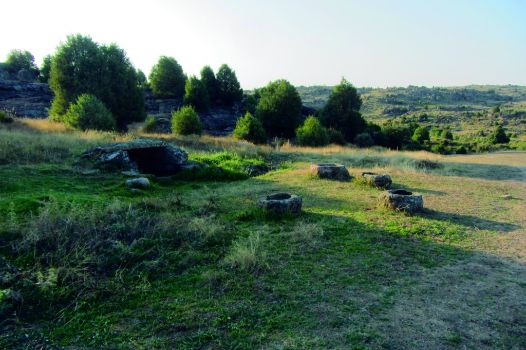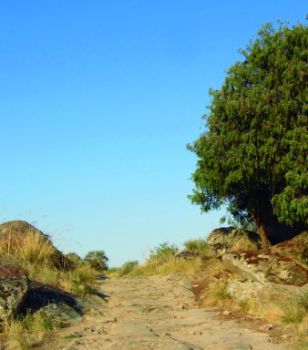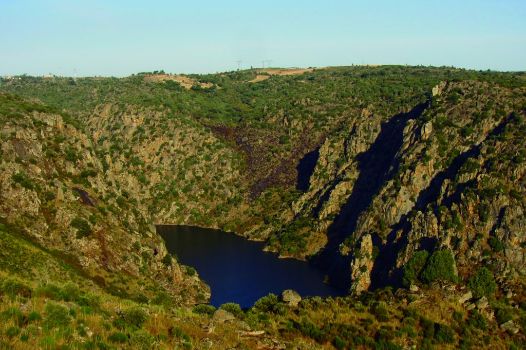Net of Natural
Trails

Stage 29: Mámoles - Fornillos de Fermoselle
Description
Contemplating the River Duero
The characteristic peneplain landscape affords the opportunity to enjoy, from Los Regatos viewpoint, stunning views of the Arribes and the calm waters of the River Duero, several hundred metres below.
The route begins in the heart of the town of Mámoles. The path is quite steep almost immediately. Barely a few metres ahead, one can already enjoy a panoramic view of the town.

The route runs through the livestock farms that surround the village, wedged between rocks and a stone wall. The holm oaks (Quercus ilex) that dominate the landscape grow around the stone walls, leaving the rest of the farm clear of trees.
The path climbs to a pasture that is slightly sloped. Although the path is hard to follow here, it is still easily walkable. There is fountain with a pile of stones where the animals drink when they return to the farm after roaming freely to graze.
The route leaves the pasture behind, and ventures into an area populated with holm oaks, prickly junipers (Juniperus oxycedrus) and broom thickets (Cytisus sp.). From here, it slowly climbs down towards Rivera Creek, which has a rest area with tables and stone benches in the shade of an ash tree (Fraxinus sp.).
The route rises along a path paved with cobblestones to prevent the wagons from sinking into softer ground and allow draft animals to move the wagon with less effort. The presence of two large junipers amidst the rocks shows this species capacity to thrive in harsh environments.
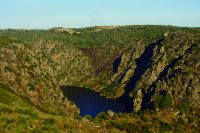
From here, the route, known as Camino de los Arrieros, becomes markedly wider. The landscape opens onto an area dominated by broom and lavender thickets (Lavandula stoechas) and granite boulders, where junipers and holm oaks are rare.
The route passes through the area known as La Borriquera, at an altitude of 660 metres, and very close to the River Duero. Indeed, sometimes one can see the slopes that confine the river; one blanketed with vegetation, and the other rocky and steep.
Past a fountain, there is an alternative route to Los Regatos Viewpoint. The views of the river from here are well worth the time and effort. With binoculars, one can easily see some of the raptors that nest or fly over the area, including the Egyptian vulture, the griffon vulture or the rare black stork (Ciconia nigra).
Back on the main road, one can see many of the typical Arribes del Duero plant species -holm oaks, junipers, brooms, small scrubs, aromatic herbs, grasses, etc.- interspersed with granite boulders.
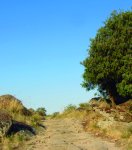
Further on, the path reaches a gate. Past this point, the landscape changes again. Grazing land and farmlands appear on both sides of the route, making use of every nook and cranny in the flat, accessible terrain.
The last stretch of the route runs again between stone walls. There are fountains and stone huts in which shepherds can take shelter. The green grass of the grazing land is in sharp contrast to the mighty holm oaks, granite outcrops and granite boulders.
From here, during 800 metres, the path begins a gentle, almost imperceptible descent towards Fornillos de Fermoselle, the endpoint of this Stage.
The name Fornillos comes from the large number of kilns that existed here in the past, the remains of which can still be seen. The sturdy Romanesque church was built with the excellent granite quarried from the surrounding areas.
Sites of interest
Profile
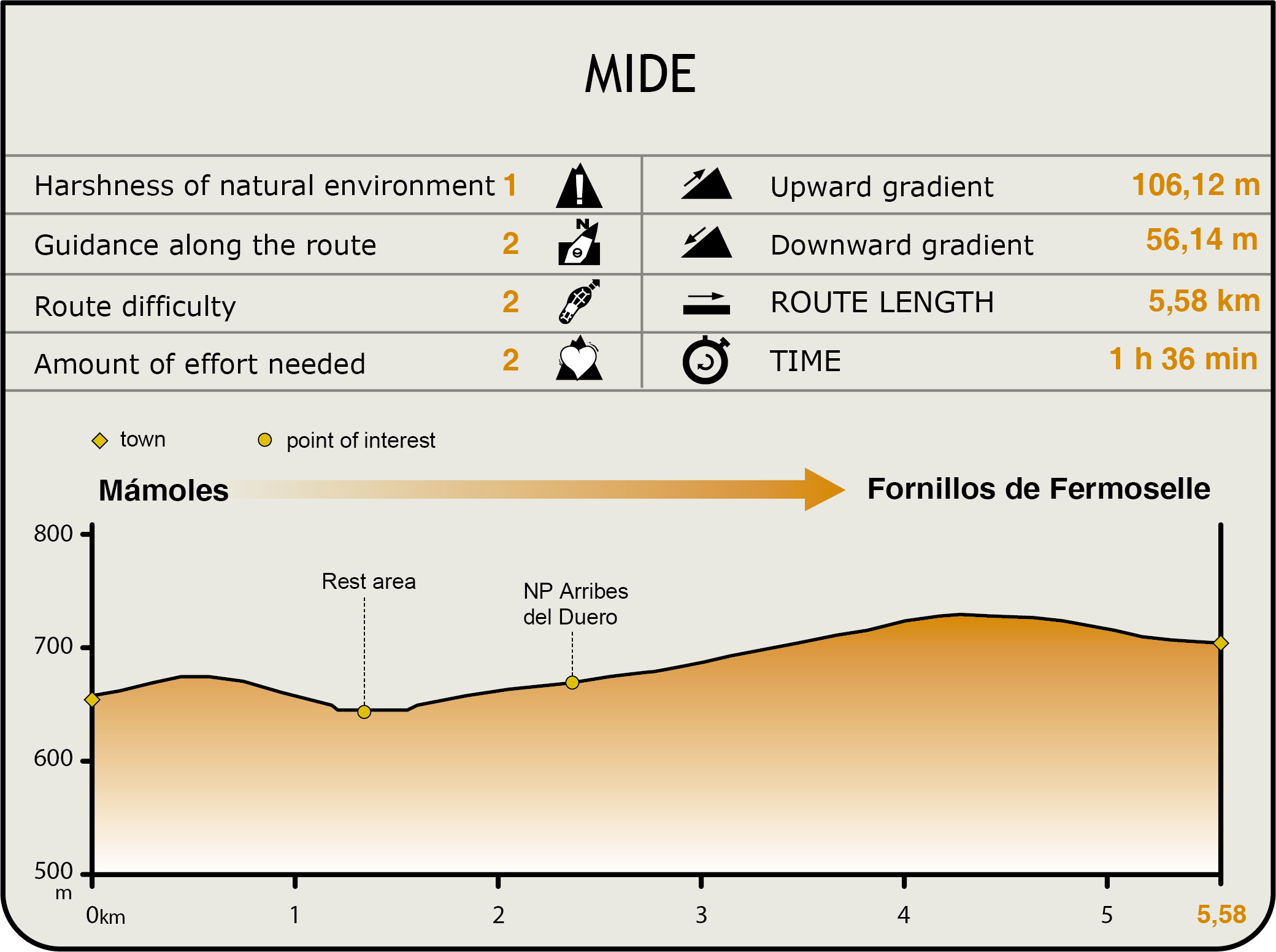
Highlights
Further information
Life in the cliffs
The raptors in the granite cliffs stand out from the plentiful fauna that inhabit the different ecosystems in Arribes.
The territory of the Golden Eagle (Aquila chrysaetos), the largest Iberian eagle, runs parallel to the local rivers, sometimes alternating with those of the Bonelli's Eagle (Hieraaetus fasciatus), with which it clearly competes.
The latter is somewhat smaller than the Golden Eagle; however, both species show a predilection for nesting in the rocky cliffs. Their nests can be frequently seen close to those of the Griffon Vulture (Gyps fulvus). This beautiful raptor, whose populations are declining at an alarming rate, have high juvenile mortality and are highly sensitive to human activity during the nesting season.
The most typical and abundant scavenger in this area is the Griffon Vulture. These birds, which live in colonies, build their nests close to each other in the granitic cliffs, forming the so-called "buitrera”.
The highest densities in the Iberian Peninsula of Egyptian Vulture (Neophron percnopterus), a migratory scavenger, are found in Arribes. Although it shares common food sources with other vultures, unlike them, it does not live in colonies. Each breeding pair has its own territory.
It is fair to say that Arribes del Duero Nature Park boasts a wide variety of wildlife, more than 200 different species. Indeed, the existence of all levels of the food chain means that this is a stable community with a rich variety of ecological niches.



